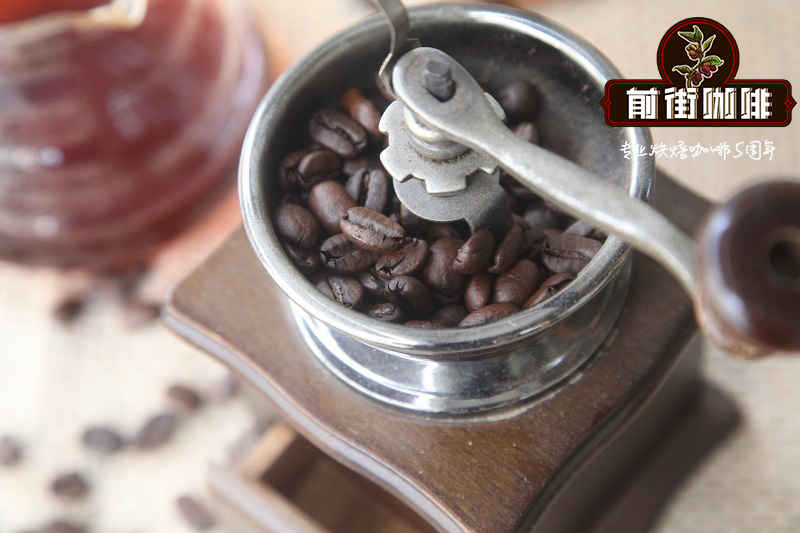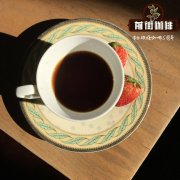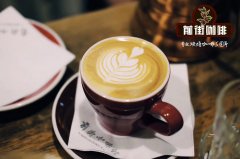What is coffee second roasting? What are coffee roasting techniques?

Professional coffee knowledge exchange More coffee bean information Please pay attention to coffee workshop (Weixin Official Accounts cafe_style)
In the world of fine coffee, apart from Taguchi's comments on double roasting and Han Huaizong's coffee theory, it is usually used as a means for merchants to beautify low-priced commercial beans. Even Mr. Yufu has taken a paragraph.
No matter what I found on the Internet or my personal experience, the second roasting will indeed promote the beauty and consistency of the appearance of coffee beans, and at the same time will make the taste of coffee dull. If the roasted commercial beans are obviously mixed, they have beautiful appearance and traditional coffee fragrance, not sour, not bitter, with a little sweet. The second roasting method will not only not be troublesome, but will greatly add points. However, if the baked beans emphasize the regional flavor and have been blessed with volcanic clouds, just to avoid sourness, or fear that the bean core will not be fully baked with bitterness, or even the foreign trade association advocates the method of secondary baking, it will definitely be kicked out by the players, regarded as deviant, and the criticism of more than ten years ago is likely to be repeated.
Personally, I am more subjective. I think coffee roasting method is not a question of right or wrong, but whether it can be applied in a specific situation. Even if you are going to bake twice, how far do you want to cool it the first time? How often do I bake again? Why is the logic behind it? I'm interested in these question marks. Because I drink Taiwan oolong tea for a long time than coffee, I also try to bake tea leaves, the same is fragrant drink, only heard that others like a little raw, medium or cooked tea, also did not hear people say that tea baked a few times is wrong. So I thought I'd try to get to the point with tea.
If you read books about Taiwanese tea, you will often see the term "raw tea." Raw tea represents tea that is roughly made by tea growers and has a high moisture content. It has not yet undergone refined processes such as picking branches, removing red shells, and fine roasting. Although fragrant, the aroma decays quickly (high moisture content easily deteriorates). But today Taiwan's high mountain tea production process has evolved with the evolution of machinery, the average consumer wants to buy raw tea in the mountains, I'm afraid they can't buy it. The taste of the market drives the evolution of the whole tea industry. People like the fresh fragrance and honey green soup color of raw tea, but they don't like the refined baking fragrance and warm soup color. After getting tea on the mountain, in order to promote the stability of tea quality, consumers don't have to worry too much about spoilage when they buy back their wives. It is a responsible attitude towards consumers to use baking cages or hot air dryers to refine tea day by day through multiple processes. However, due to the irreversible trend of the market and the adjustment of the process of tea making on the mountain, the tea farmers on the mountain are now completing the drying machine to reduce the moisture content of tea to a ratio convenient for consumers to preserve. The machine will complete the branch selection, color selection and vacuum packaging. We will omit the distribution system of large plate and middle plate first. Now there are many tea shops selling tea. After receiving 20 catties of tea vacuum bags each, they only need to make four liang or half jin of packaging before they are put on shelves for sale. The shop didn't even have anything to make tea with. Because the market likes fresh original flavor, tea will change once every time it experiences baking flavor, and then the more cooked it becomes, the better the tea will be roasted by customers, resulting in fewer stores willing to bake tea, with the exception of the tea competition "Tea evaluation process: Weigh tea sample (3 grams) → put into evaluation cup (150CC) → flush hot boiled water (100 ℃) → soak (6 minutes) → open soup → examine appearance → observe water color → smell aroma → evaluate taste → observe leaf bottom → evaluate, etc."This process is too different from the conditions for ordinary people to brew tea. In order to meet the requirements of soaking at 100 ℃ for 6 minutes, there are different doorways for tea baking, water color and tea aroma. It can be concluded that tea sent directly from the mountain is immersed in this way. Bitterness is inevitable, and the fragrance has long deteriorated.
Even though it takes only two or three hours to bake raw tea made in the mountains to a competitive baking temperature, it is only an appearance, and this baking method cannot bake the tea into the interior, especially the hemispherical mountain tea, which will be in a state of external coke endogenous. Such tea is highly sensitive to external temperature, humidity, light, etc., and the aroma and taste set at the end of baking will run away every other day. Therefore, if the raw tea is intended to be baked into a semi-ripe refined tea at the beginning, it will usually be baked repeatedly at medium and low temperature (60~110 degrees) for many days. After the tea is cooled and returned to room temperature every day, the moisture inside the tea continues to flow to the surface (the baking degree will return to shallow), and it will be baked again every other day. In this way, the target baking degree will be reached many times. At that time, the moisture content will be low enough, and the flavor of the tea will also stabilize. However, at this time, the special smell of the mountains has disappeared. Caramel aromas become the dominant note, and the smoothness and consistency of the soup increase.
Back to coffee, according to Taguchi's systematic coffee science, raw beans are divided into A/B/C/D beans, among which thick and hard D beans are only suitable for medium and deep roasting according to Tian Lao's point of view, otherwise the bean core will not be cooked, and if you use a straight lighter to make C/D beans shallow roasting, it is simply impossible. But if it is D-type beans want to make shallow baking, if double baking method, the problem of unripe bean core will not be overcome (the steam-time fire is also similar to the extension of the time)? But what about flavor? The longer you bake, the more you lose, whether tea or coffee; the longer you bake, the more you transform, whether tea or coffee, the question is, is what we want?
So if you want to play the second roast of coffee, how much should you roast the first time? And how long before the second one? Some people say to bake until dehydration is complete, and every other day to bake a second time; some people say to bake just into a burst, and then cool back to room temperature can bake a second time. That's right. Why?
My own idea, the first baking to the beans white spots expand or turn white, in terms of Mena reaction, the real aromatic chemical reaction has not yet begun, this stage is only the conversion of monosaccharides into Amadori or Heinz structure, after cooling, the internal moisture of the beans will slowly move to the bean surface, put a day time (no scientific verification) is the experience value of people, the next day when the second baking can be more complete free water separation, Then, a series of reactions such as the generation and condensation of dicarbonyl compounds by Mena reaction to produce aromatic heterocycles are started.
Simple is better, what can be done once, why should it be divided into two times, especially Tian Lao's systematic coffee learning has been overturned by many kinds of equipment/methods, is it worth baking twice or double baking? Because of the recent play pottery baked beans, I concluded that if you can not overcome the black spots on the beans, it is only luck to bake a good taste with pottery, as for how to overcome it? I spent so much time typing just thinking,"Do I still have to stick to the first baking when I fall in the pot, or do I surrender and imitate the second baking of others?" My heart still wants to bake once, bake twice and my personality does not match.
Important Notice :
前街咖啡 FrontStreet Coffee has moved to new addredd:
FrontStreet Coffee Address: 315,Donghua East Road,GuangZhou
Tel:020 38364473
- Prev

How to judge the extraction state of a cup of coffee?
Professional coffee knowledge exchange more coffee bean information please follow the coffee workshop (Wechat official account cafe_style) this article will be based on the basic theory of coffee extraction, as well as tasting coffee in three cases: over-extraction, under-extraction and ideal extraction. Extraction can be said to be the most important but least understood part of coffee brewing. Extraction represents everything. If there is no extraction or even no
- Next

What are the reasons why espresso flows normally but doesn't taste good?
Professional coffee knowledge exchange More coffee bean information Please pay attention to the coffee workshop (Weixin Official Accounts cafe_style) Many baristas spend a lot of time adjusting the bean grinder every morning. After making coffee every day, they will carefully remove the residue in the coffee handle and clean up the residual powder in the channel of the bean grinder, so that every link of production is accurate. And baristas usually do
Related
- Beginners will see the "Coffee pull flower" guide!
- What is the difference between ice blog purified milk and ordinary milk coffee?
- Why is the Philippines the largest producer of crops in Liberia?
- For coffee extraction, should the fine powder be retained?
- How does extracted espresso fill pressed powder? How much strength does it take to press the powder?
- How to make jasmine cold extract coffee? Is the jasmine + latte good?
- Will this little toy really make the coffee taste better? How does Lily Drip affect coffee extraction?
- Will the action of slapping the filter cup also affect coffee extraction?
- What's the difference between powder-to-water ratio and powder-to-liquid ratio?
- What is the Ethiopian local species? What does it have to do with Heirloom native species?

